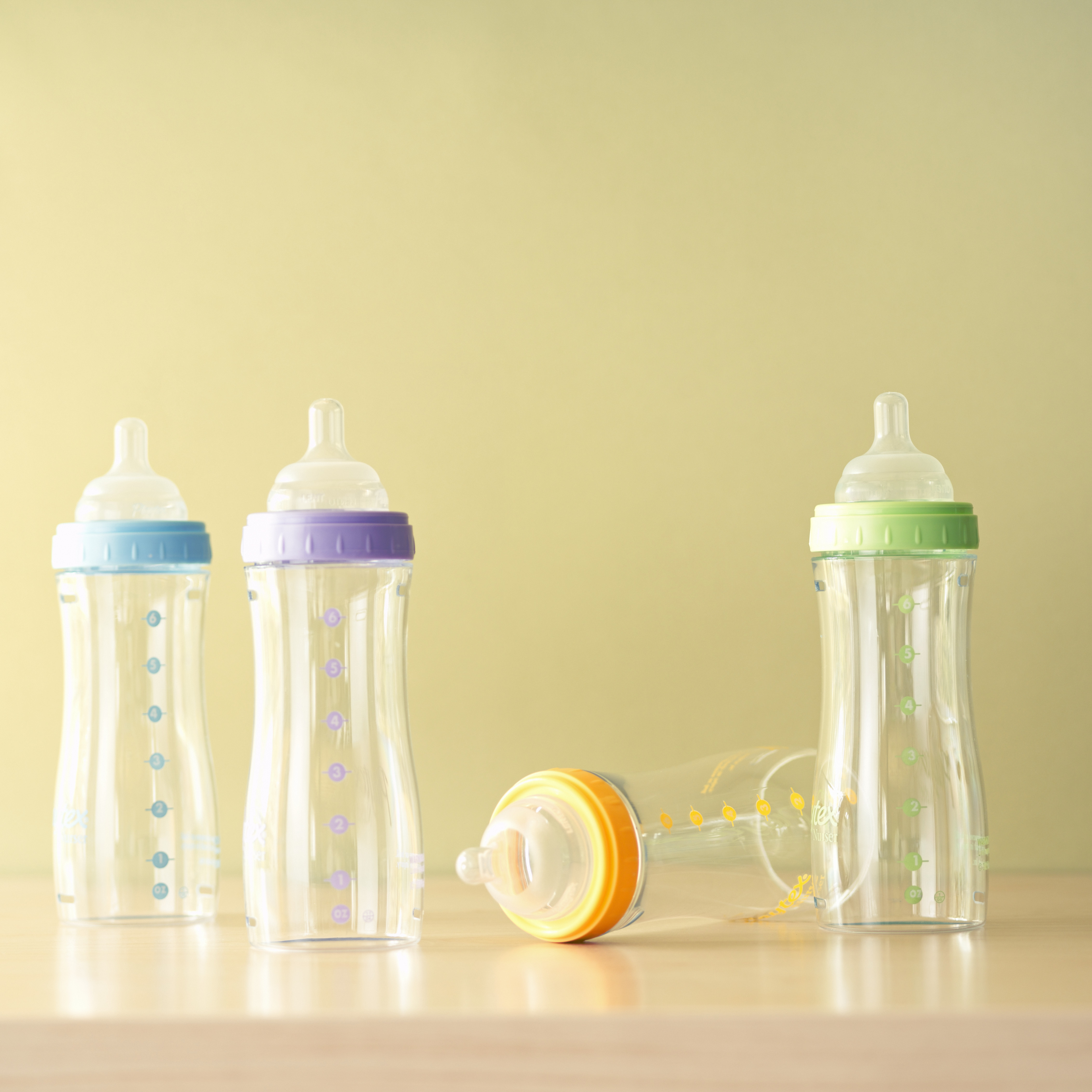Bottle Buying Guide
 Whether you use formula or are breastfeeding, you will likely need a baby bottle at some point for your infant to feed. Choosing the right bottle can be tricky, so take a look at these tips before you head to the store:
Whether you use formula or are breastfeeding, you will likely need a baby bottle at some point for your infant to feed. Choosing the right bottle can be tricky, so take a look at these tips before you head to the store:
Plastic vs. glass:
Plastic bottles are lightweight and won’t break easily. You may be concerned about chemicals in the plastic, but you can check the bottle packaging to be assured if it is BPA-free.
Some plastic bottles have disposable liners. These make clean up easy, but must be continuously purchased since they are one-time-use.
Glass bottles risk shattering if dropped, but don’t have the same risk of chemicals as plastic. They are generally heavier, which you should keep in mind for when your baby wants to hold the bottle on his own. Many companies sell silicone sleeves that go over the bottle to give them better grip and protect them from breaking.
Nipple choice:
Most bottles come with a set of nipples, but you may need a different material, shape or flow. Latex nipples are soft and flexible, but some infants may be allergic. Silicone nipples are firm and hold their shape well.
Most nipples are dome-shaped, but some may have a flat side that can rest on your child’s tongue. Nipples with a flat top are said to feel most like a mother’s breast.
Flow speeds are often listed with an age recommendation, but don’t worry if your baby doesn’t match up. Start with a slow flow and watch your baby as he eats. If he is struggling to get milk, you may need a faster flow. If he seems to be choking or milk is spilling out of his mouth, opt for a slower flow.
Buying tips:
Most breast pumps include bottles that attach directly to the pump. Try those out first for the sake of convenience. Your pump may have converter attachments so you can directly express milk into another brand of bottle.
Don’t buy in bulk at first. No matter the reviews on a certain bottle, it may not be a good fit for your baby. Try one type of bottle to see how your baby responds. If it’s a good match, go ahead and purchase more. If it doesn’t work, you don’t have a pile of bottles to return.
Always sterilize new bottles and nipples before first use.
Click here for tips on storing and thawing breast milk.

